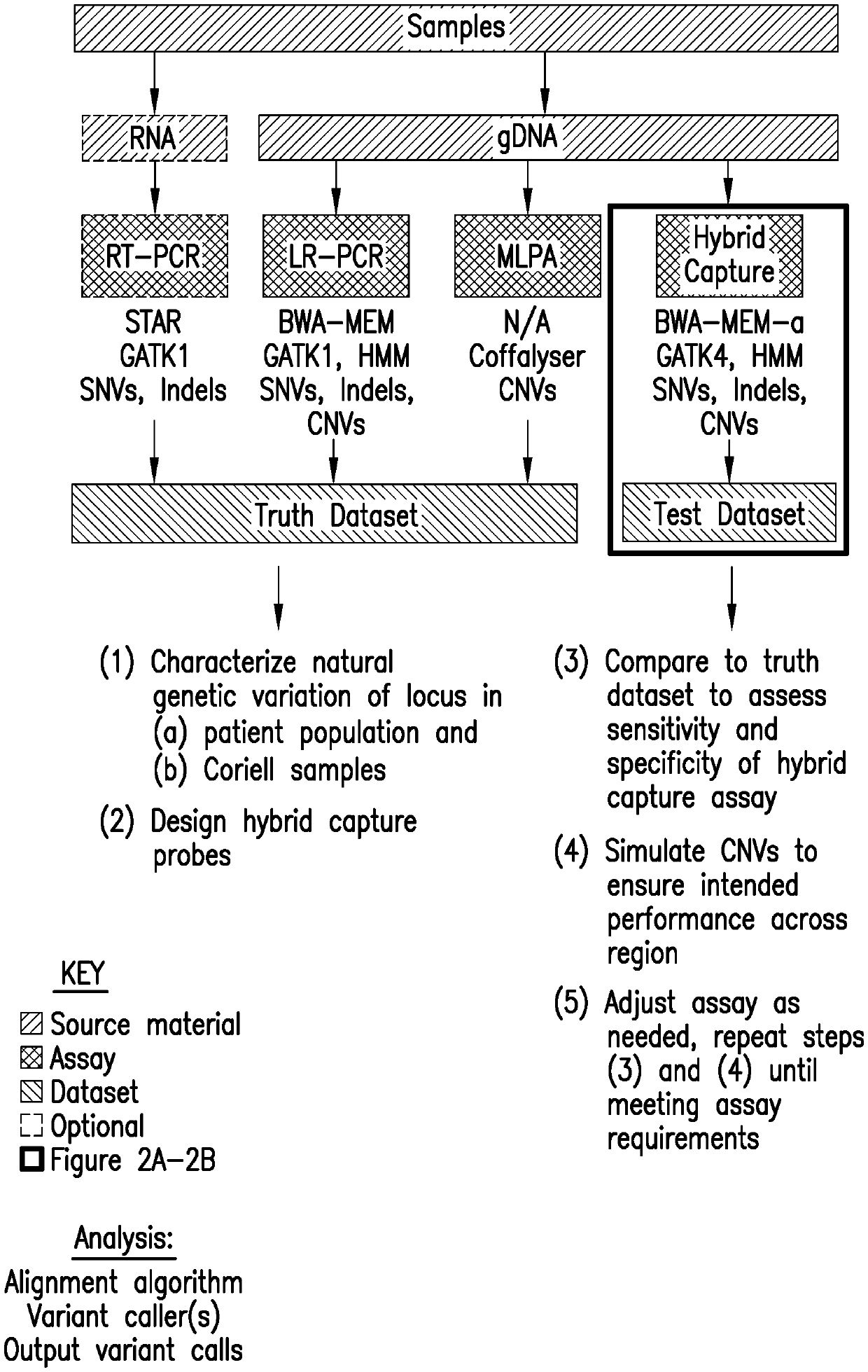Method for detecting genetic variation in highly homologous sequences by independent alignment and pairing of sequence reads
a technology of genetic variation and independent alignment, applied in the field of genetic variation determination, can solve the problems and are unsuitable for widespread clinical use, and achieve the effect of significant time, labor and expense savings
- Summary
- Abstract
- Description
- Claims
- Application Information
AI Technical Summary
Benefits of technology
Problems solved by technology
Method used
Image
Examples
example 1
[0134]Detecting Clinically Actionable Variants in the 3′ Exons of Pms2
[0135]This example illustrates a strategy for detection of SNVs, indels, and CNVs in the 3′ exons of PMS2. This study was reviewed and designated as exempt by Western Institutional Review Board and complied with the Health Insurance Portability and Accountability Act (HIPAA).
[0136]Materials and Methods
[0137]Study Samples:
[0138]Table 51 of Appendix indicates which sample sets were used for particular assays and analyses. Cell-line DNA was purchased from Coriell Cell Repositories (Camden, N.J.) (Table S2 of Appendix). Patient sample DNA was extracted from de-identified blood or saliva samples. DNA samples with known positives were a gift from Invitae Corporation.
[0139]LR-PCR:
[0140]DNA was extracted and underwent an additional cleanup via incubation with 1× SPRI beads followed by 80% ethanol wash and elution into TE (10 mM Tris-HCl, 1 mM EDTA, pH 8.0). Approximately 300 ng of eluted DNA served as the template in sepa...
PUM
| Property | Measurement | Unit |
|---|---|---|
| pH | aaaaa | aaaaa |
| temperature | aaaaa | aaaaa |
| temperature | aaaaa | aaaaa |
Abstract
Description
Claims
Application Information
 Login to View More
Login to View More - Generate Ideas
- Intellectual Property
- Life Sciences
- Materials
- Tech Scout
- Unparalleled Data Quality
- Higher Quality Content
- 60% Fewer Hallucinations
Browse by: Latest US Patents, China's latest patents, Technical Efficacy Thesaurus, Application Domain, Technology Topic, Popular Technical Reports.
© 2025 PatSnap. All rights reserved.Legal|Privacy policy|Modern Slavery Act Transparency Statement|Sitemap|About US| Contact US: help@patsnap.com



